}}drupal-data/images/blog-details.png)
Internal Medicine
Beat The Heatstroke
Dr. Damanjit Singh Chadha Jun 11, 2014
 Heatstroke is a medical emergency and can be fatal if not treated promptly. Cooling the patient is a critical step in the treatment of heatstroke
If you think you only need a sunscreen to keep yourself safe from the scorching heat, you are wrong. The heat not only tans your skin but it may also lead to a serious health condition called ‘heatstroke’ or ‘sun-stroke’. A heatstroke is a condition wherein the body temperature rises extremely high due to exposure to heat. Therefore the body starts losing its ability to cool itself and gets over-heated. In other words, when a person’s core temperature rises above 40°C (104°F), a heatstroke happens. It’s a condition when cells in the body begin to break down and multiple organs stop functioning. Heatstroke is not a fever.
This is a common condition in places where hot air and humidity are prevalent. Young children, the elderly and patients are at a higher risk of getting affected by the heatstroke. Sunstroke is a serious medical condition; it is a medical emergency. If left untreated, it can cause multiple organ failure, brain damage and may lead to death.
Heatstroke is the progression of two heat-related conditions. When your body overheats, you may initially develop heat cramps. If you don’t cool down, you may progress to symptoms of heat exhaustion. Heatstroke occurs if your body temperature continues to rise. At this point, emergency treatment is needed. In a period of a few hours, untreated heatstroke can cause damage to your brain, heart, kidneys and muscles. The longer the treatment is delayed, the condition may worsen.
Some of the common symptoms of heatstroke include — unconsciousness, mental confusion and shallow breathing. Other symptoms include nausea, seizures, disorientation and even coma.
Treatment of heatstroke involves cooling down the body below the core temperature. A person afflicted by a heat exhaustion should be taken to a cool place quickly. The patient should be given plenty of water to drink so that s/he begins to feel better and experiences no long-term complications.
Causes
Here are some of the most common causes:
Hot weather: Quite obviously, this is one of the leading causes for the condition. This condition is caused due to excessive exposure to hot and humid weather, especially if you are exposed to it for an extended period of time.
Excessive physical labour: Known as exertional heatstroke, this condition is commonly seen in people who do strenuous activity such as working out in hot and humid weather.
Alcohol consumption: Alcohol dehydrates you. It also affects your body’s ability to regulate temperature. Therefore, alcohol consumption during hot weather is another factor that can cause a heatstroke.
Inadequate water consumption: Getting dehydrated is another cause for heatstroke. Dehydration or the lack of water in the body is one of the primary causes for excessive fatigue and lack of the body’s ability to regulate temperature.
What kind of treatment and first-aid is needed?
A heatstroke is an emergency situation. Here is what you need to do while waiting for emergency treatment:
•Move the patient to a cool location or an air-conditioned room.
•Take off the excess clothing, if any, to help his/her body cool down.
•Place ice packs or cold towels on the person’s head, neck, armpits and groin.
•Spray water on the patient and use a fan to cool him/her down.
•Give cold water or lemon juice with salt and sugar to help the patient re-hydrate.
If you are diagnosed with heatstroke, your doctor will first administer electrolyte replacements. This may include either oral or intravenous administration of electrolytes. Apart from that you may be advised to rest and avoid exposure to the sun for a few days.
Symptoms of Heatstroke
The foremost symptom of heatstroke is a high body temperature. In a few cases, however, fainting may be the first sign.
Other symptoms may include:
•Splitting headache
•Dizziness
•Unconsciousness
•Lack of sweating
•Red and dry skin
•Muscle cramps, weakness
•Nausea and vomiting
•Rapid heartbeat, which may be either strong or weak
•Rapid, shallow breathing
•Behavioural changes such as confusion
•Seizures
Initiate first-aid
If you suspect that someone is suffering from a heatstroke, take the person to a hospital immediately. Any delay in seeking medical help can be fatal.
While waiting for the emergency service to arrive, move the person to an air-conditioned environment or at least a cool shaded area and remove any extra clothing.
Adopt the following cooling strategies
•Fan the patient while wetting his/her skin with water.
•Apply ice packs to the patient’s armpits, groin, neck and back because cooling these areas may reduce body temperature.
•Immerse the patient in a tub of cool water or give him/her an ice bath.
If emergency response is delayed, call the hospital emergency room for additional instructions.
Heatstroke is a medical emergency and can be fatal if not treated promptly. Cooling the patient is a critical step in the treatment of heatstroke
If you think you only need a sunscreen to keep yourself safe from the scorching heat, you are wrong. The heat not only tans your skin but it may also lead to a serious health condition called ‘heatstroke’ or ‘sun-stroke’. A heatstroke is a condition wherein the body temperature rises extremely high due to exposure to heat. Therefore the body starts losing its ability to cool itself and gets over-heated. In other words, when a person’s core temperature rises above 40°C (104°F), a heatstroke happens. It’s a condition when cells in the body begin to break down and multiple organs stop functioning. Heatstroke is not a fever.
This is a common condition in places where hot air and humidity are prevalent. Young children, the elderly and patients are at a higher risk of getting affected by the heatstroke. Sunstroke is a serious medical condition; it is a medical emergency. If left untreated, it can cause multiple organ failure, brain damage and may lead to death.
Heatstroke is the progression of two heat-related conditions. When your body overheats, you may initially develop heat cramps. If you don’t cool down, you may progress to symptoms of heat exhaustion. Heatstroke occurs if your body temperature continues to rise. At this point, emergency treatment is needed. In a period of a few hours, untreated heatstroke can cause damage to your brain, heart, kidneys and muscles. The longer the treatment is delayed, the condition may worsen.
Some of the common symptoms of heatstroke include — unconsciousness, mental confusion and shallow breathing. Other symptoms include nausea, seizures, disorientation and even coma.
Treatment of heatstroke involves cooling down the body below the core temperature. A person afflicted by a heat exhaustion should be taken to a cool place quickly. The patient should be given plenty of water to drink so that s/he begins to feel better and experiences no long-term complications.
Causes
Here are some of the most common causes:
Hot weather: Quite obviously, this is one of the leading causes for the condition. This condition is caused due to excessive exposure to hot and humid weather, especially if you are exposed to it for an extended period of time.
Excessive physical labour: Known as exertional heatstroke, this condition is commonly seen in people who do strenuous activity such as working out in hot and humid weather.
Alcohol consumption: Alcohol dehydrates you. It also affects your body’s ability to regulate temperature. Therefore, alcohol consumption during hot weather is another factor that can cause a heatstroke.
Inadequate water consumption: Getting dehydrated is another cause for heatstroke. Dehydration or the lack of water in the body is one of the primary causes for excessive fatigue and lack of the body’s ability to regulate temperature.
What kind of treatment and first-aid is needed?
A heatstroke is an emergency situation. Here is what you need to do while waiting for emergency treatment:
•Move the patient to a cool location or an air-conditioned room.
•Take off the excess clothing, if any, to help his/her body cool down.
•Place ice packs or cold towels on the person’s head, neck, armpits and groin.
•Spray water on the patient and use a fan to cool him/her down.
•Give cold water or lemon juice with salt and sugar to help the patient re-hydrate.
If you are diagnosed with heatstroke, your doctor will first administer electrolyte replacements. This may include either oral or intravenous administration of electrolytes. Apart from that you may be advised to rest and avoid exposure to the sun for a few days.
Symptoms of Heatstroke
The foremost symptom of heatstroke is a high body temperature. In a few cases, however, fainting may be the first sign.
Other symptoms may include:
•Splitting headache
•Dizziness
•Unconsciousness
•Lack of sweating
•Red and dry skin
•Muscle cramps, weakness
•Nausea and vomiting
•Rapid heartbeat, which may be either strong or weak
•Rapid, shallow breathing
•Behavioural changes such as confusion
•Seizures
Initiate first-aid
If you suspect that someone is suffering from a heatstroke, take the person to a hospital immediately. Any delay in seeking medical help can be fatal.
While waiting for the emergency service to arrive, move the person to an air-conditioned environment or at least a cool shaded area and remove any extra clothing.
Adopt the following cooling strategies
•Fan the patient while wetting his/her skin with water.
•Apply ice packs to the patient’s armpits, groin, neck and back because cooling these areas may reduce body temperature.
•Immerse the patient in a tub of cool water or give him/her an ice bath.
If emergency response is delayed, call the hospital emergency room for additional instructions. Categories
Clear allMeet the doctor
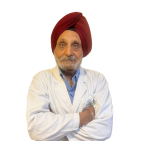
Dr. Damanjit Singh Chadha
CONSULTANT INTERNAL MEDICINE | Fortis Vasant Kunj
- Internal Medicine | Internal Medicine | General Physician
-
25 Years
-
1500







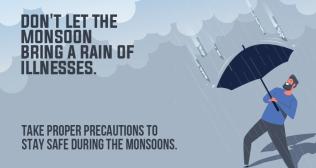
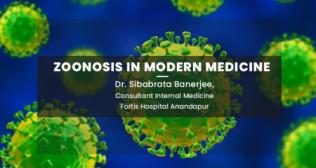
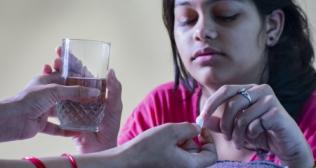
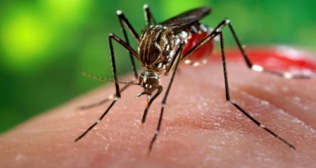
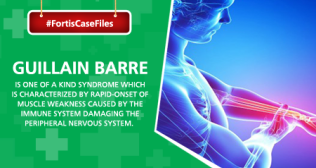

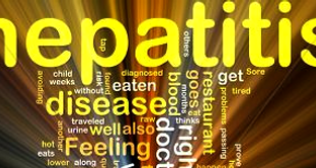

}}drupal-data/images/blog-lists.png)


